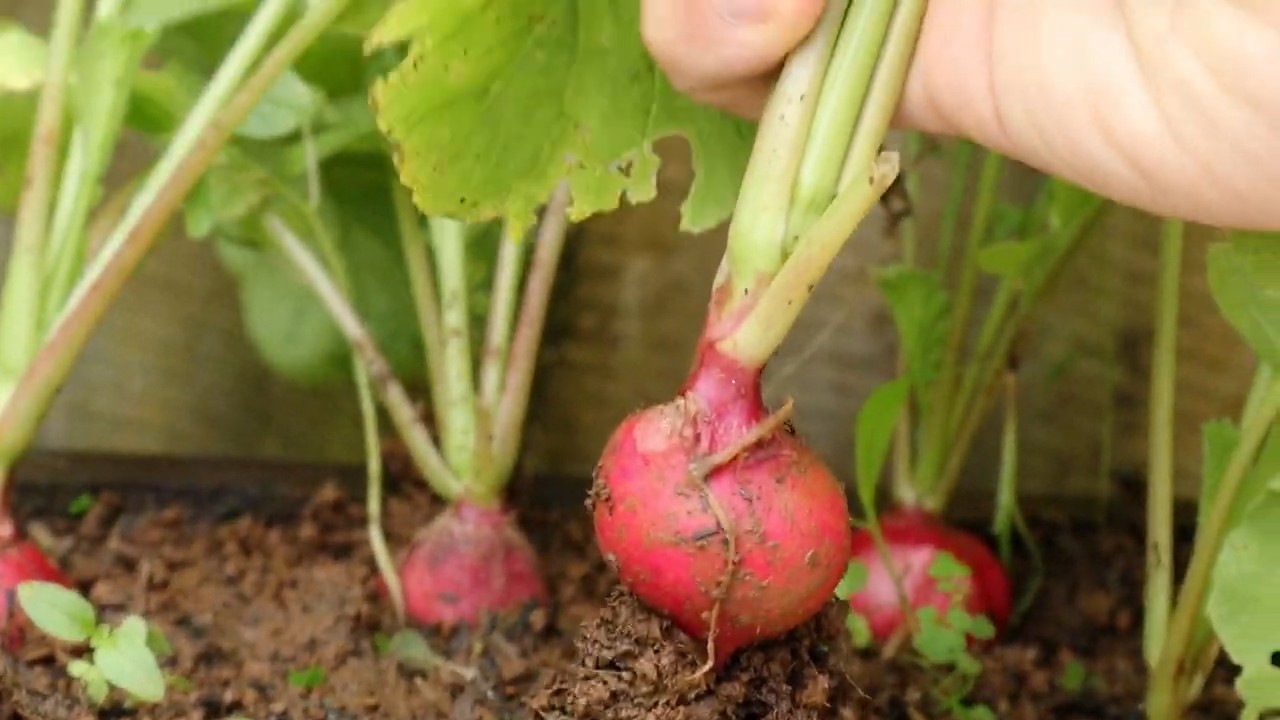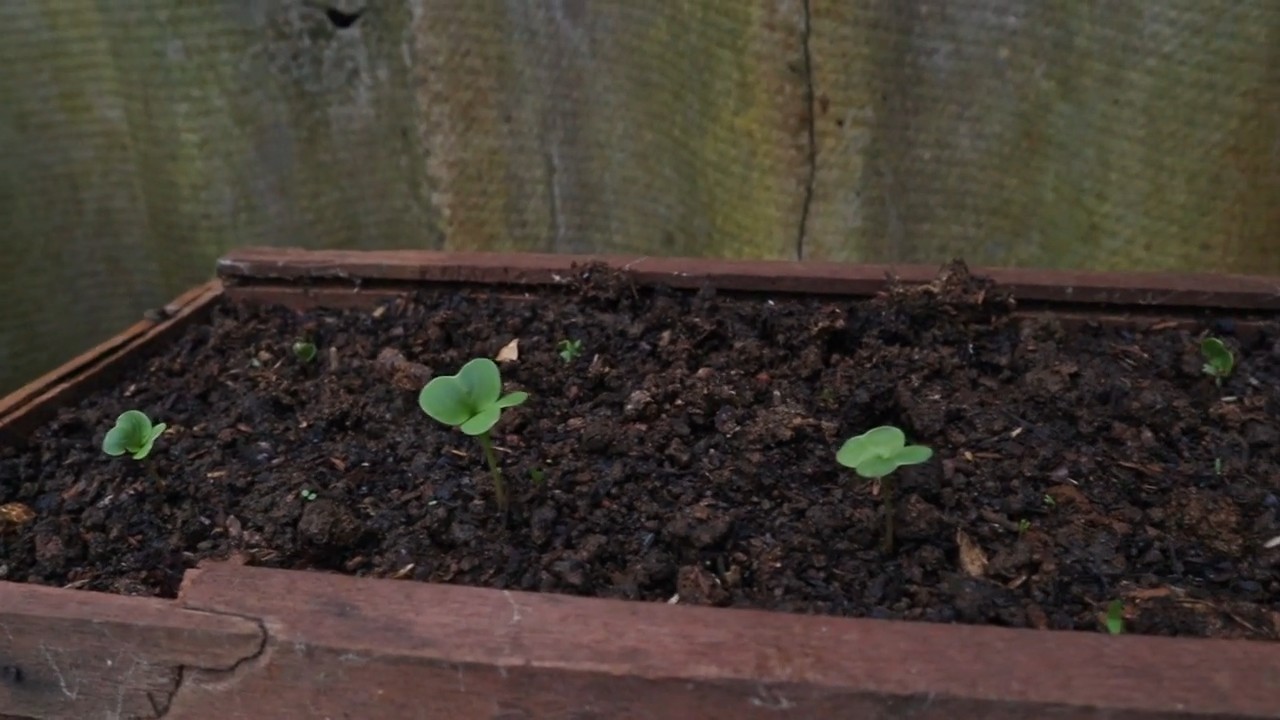Grow Red Radishes at Home – and unlock a world of fresh, peppery goodness right at your fingertips! Have you ever craved that satisfying crunch and zesty bite of a radish, only to be disappointed by the bland, store-bought variety? I know I have! That’s why I’m so excited to share these simple, effective DIY tricks that will have you harvesting vibrant, ruby-red radishes in just a few weeks.
Radishes have a surprisingly rich history, dating back to ancient times. They were cultivated in Egypt even before the pyramids were built! For centuries, they’ve been valued not only for their unique flavor but also for their medicinal properties. Today, in many cultures, radishes symbolize good fortune and prosperity, often served during festive celebrations.
But beyond their historical significance, why should *you* bother to grow red radishes at home? Well, for starters, homegrown radishes taste infinitely better than anything you can buy. Plus, they’re incredibly easy to grow, even if you have limited space or gardening experience. This DIY guide will provide you with the knowledge and simple hacks to avoid common pitfalls and ensure a bountiful harvest. Imagine adding a burst of color and flavor to your salads, tacos, or even just enjoying them as a healthy snack – all thanks to your own green thumb! Let’s get started and transform your space into a radish haven!

Grow Your Own Crunchy Red Radishes: A Beginner’s Guide
Hey there, fellow gardening enthusiasts! I’m so excited to share my experience growing radishes at home. These little red gems are incredibly easy to cultivate, even if you’re a complete newbie like I was not too long ago. They’re fast-growing, adding a satisfying crunch and peppery zing to salads and snacks. Plus, harvesting your own food is just plain awesome! So, let’s dive into how you can grow your own delicious red radishes.
What You’ll Need
Before we get our hands dirty, let’s gather the essentials. Here’s a checklist of everything you’ll need to successfully grow radishes:
* Radish Seeds: Choose a variety that suits your taste. ‘Cherry Belle’ is a classic and reliable choice, but there are many others like ‘French Breakfast’ or ‘Sparkler’.
* Well-Draining Soil: Radishes thrive in loose, fertile soil. If your garden soil is heavy clay, amend it with compost or other organic matter.
* Gardening Gloves: Protect your hands from dirt and potential irritants.
* Hand Trowel or Garden Fork: For preparing the soil and planting seeds.
* Watering Can or Hose: To keep the soil consistently moist.
* Row Covers (Optional): To protect seedlings from pests like flea beetles.
* Fertilizer (Optional): A balanced fertilizer can boost growth, but it’s not always necessary.
* A Sunny Spot: Radishes need at least 6 hours of sunlight per day.
Preparing the Soil: The Foundation for Success
Radishes are pretty forgiving, but they do appreciate well-prepared soil. This step is crucial for ensuring they develop properly and don’t end up stunted or misshapen.
1. Choose Your Location: Select a spot in your garden that receives at least 6 hours of sunlight daily. Radishes can tolerate some partial shade, especially in hotter climates, but they’ll grow best in full sun.
2. Clear the Area: Remove any weeds, rocks, or debris from the planting area. Weeds compete with radishes for nutrients and water, so it’s important to get rid of them.
3. Loosen the Soil: Use a hand trowel or garden fork to loosen the soil to a depth of at least 6 inches. This will make it easier for the radish roots to penetrate the soil.
4. Amend the Soil (If Necessary): If your soil is heavy clay or sandy, amend it with compost or other organic matter. Compost improves drainage, aeration, and fertility. Work the compost into the soil thoroughly. I usually add a generous layer, about 2-3 inches thick.
5. Level the Surface: Rake the soil to create a smooth, even surface. This will make it easier to plant the seeds at the correct depth.
Planting the Seeds: Tiny Seeds, Big Potential
Now comes the fun part – planting the radish seeds! This is where you’ll start to see your radish garden come to life.
1. Create Rows: Use your finger or a trowel to create shallow rows in the soil, about 1/2 inch deep and 1 inch apart. The spacing is important because radishes need room to grow.
2. Sow the Seeds: Sprinkle the radish seeds evenly along the rows, spacing them about 1 inch apart. Don’t overcrowd them, or they’ll compete for resources.
3. Cover the Seeds: Gently cover the seeds with a thin layer of soil.
4. Water Gently: Use a watering can or hose with a gentle spray to water the soil thoroughly. Be careful not to wash away the seeds.
5. Label Your Rows: It’s always a good idea to label your rows with the date and variety of radish you planted. This will help you keep track of your progress.
Caring for Your Radishes: Water, Weed, and Watch Them Grow
Radishes are relatively low-maintenance, but they do need consistent care to thrive. Here’s what you need to do to keep your radishes happy and healthy.
1. Water Regularly: Keep the soil consistently moist, but not waterlogged. Radishes need about 1 inch of water per week. Water more frequently during hot, dry weather. I usually check the soil moisture every day and water when the top inch feels dry.
2. Weed Regularly: Remove any weeds that pop up around your radishes. Weeds compete for nutrients and water, so it’s important to keep them under control. Hand-pulling weeds is usually the best option, as it avoids damaging the radish roots.
3. Thin Seedlings (If Necessary): If your radish seedlings are too crowded, thin them out to about 1 inch apart. This will give them more room to grow. You can eat the thinned seedlings as microgreens!
4. Protect from Pests (If Necessary): Flea beetles can be a problem for radishes, especially in the spring. These tiny beetles chew small holes in the leaves. To protect your radishes, you can cover them with row covers. You can also use insecticidal soap if necessary, but I prefer to avoid using pesticides if possible.
5. Fertilize (Optional): If your soil is poor, you can fertilize your radishes with a balanced fertilizer. Follow the instructions on the fertilizer package. I usually don’t fertilize my radishes unless they seem to be growing slowly.
Harvesting Your Radishes: The Sweet Reward
The best part of growing radishes is, of course, harvesting them! Radishes are incredibly fast-growing, so you’ll be able to enjoy your harvest in just a few weeks.
1. Check for Maturity: Radishes are typically ready to harvest in 3-4 weeks, depending on the variety. Check the seed packet for specific maturity dates. The radish roots should be about 1 inch in diameter.
2. Harvest Carefully: Gently loosen the soil around the radish with a hand trowel. Then, grasp the radish leaves near the base and pull it straight out of the ground.
3. Wash and Store: Wash the radishes thoroughly to remove any dirt. Trim off the leaves, leaving about 1/2 inch of stem. Store the radishes in a plastic bag in the refrigerator. They should last for about a week. The radish greens are also edible and can be used in salads or stir-fries.
4. Succession Planting: To enjoy a continuous harvest of radishes, plant a new batch of seeds every 2 weeks. This is called succession planting.
Troubleshooting: Common Problems and Solutions
Even with the best care, you might encounter some problems while growing radishes. Here are some common issues and how to fix them:
* Radishes are too small: This could be due to overcrowding, poor soil, or lack of water. Thin the seedlings, amend the soil with compost, and water regularly.
* Radishes are cracked: This is usually caused by inconsistent watering. Keep the soil consistently moist.
* Radishes are pithy or woody: This can happen if radishes are left in the ground too long. Harvest them as soon as they are mature.
* Radishes are bitter: This can be caused by hot weather or lack of water. Provide shade during the hottest part of the day and water regularly.
* Flea beetles are attacking the leaves: Cover the radishes with row covers or use insecticidal soap.
Enjoying Your Harvest: From Garden to Table
Now that you’ve harvested your radishes, it’s time to enjoy them! Here are some ideas for using your homegrown radishes:
* Eat them raw: Radishes are delicious eaten raw in salads, sandwiches, or as a snack.
* Roast them: Roasting radishes mellows their flavor and makes them tender.
* Pickle them: Pickled radishes are a tangy and crunchy addition to any meal.
* Add them to stir-fries: Radishes add a peppery kick to stir-fries.
* Make radish butter: Blend radishes with butter and herbs for a flavorful spread.
* Use the greens: Don’t throw away the radish greens! They can be used in salads, stir-fries, or soups.
Growing radishes is a rewarding experience that anyone can enjoy. With a little bit of effort, you can have a continuous supply of fresh, crunchy radishes right from your own backyard. Happy gardening!

Conclusion
So, there you have it! Growing red radishes at home is not only surprisingly simple, but it’s also incredibly rewarding. Forget those bland, store-bought radishes that lack that peppery punch. With just a few simple steps, you can cultivate a vibrant crop of crisp, flavorful radishes right in your own backyard, balcony, or even on a sunny windowsill.
Why is this DIY trick a must-try? Because it puts you in control. You control the soil, the watering, and the harvesting, ensuring you get the freshest, most delicious radishes possible. Plus, it’s a fantastic way to connect with nature, learn about the growing process, and enjoy the satisfaction of eating something you’ve nurtured from seed to table.
Beyond the basic method, there’s plenty of room for experimentation. Try different varieties of radishes! From the classic Cherry Belle to the elongated French Breakfast or the fiery Black Spanish, each offers a unique flavor profile and texture. You can also experiment with companion planting. Radishes are known to deter pests from other vegetables, making them excellent companions for carrots, lettuce, and cucumbers. Consider interplanting them in your garden to create a mutually beneficial ecosystem.
Another variation to consider is succession planting. By sowing a small batch of radish seeds every week or two, you can ensure a continuous harvest throughout the growing season. This prevents you from being overwhelmed with radishes all at once and allows you to enjoy them fresh for an extended period. You can also try growing radishes in containers of different sizes and materials to see what works best for your space and climate.
Don’t be afraid to get your hands dirty and embrace the learning process. Gardening is all about experimentation and discovery. Even if you encounter a few challenges along the way, the reward of harvesting your own homegrown radishes is well worth the effort.
We wholeheartedly encourage you to give this DIY trick a try. It’s an easy, affordable, and incredibly satisfying way to add fresh, flavorful radishes to your diet. And the best part? You’ll know exactly where your food comes from and how it was grown.
Once you’ve harvested your first batch of homegrown radishes, we’d love to hear about your experience! Share your tips, tricks, and photos with us in the comments below. Let’s build a community of radish-growing enthusiasts and inspire others to discover the joy of growing their own food. What variety did you grow? Did you encounter any challenges? What are your favorite ways to enjoy your homegrown radishes? We can’t wait to hear from you! So, grab some seeds, get planting, and get ready to enjoy the crisp, peppery goodness of your very own homegrown radishes. Happy gardening!
Frequently Asked Questions (FAQ)
What is the best time of year to grow red radishes?
Radishes are cool-season crops, meaning they thrive in cooler temperatures. The best time to plant them is in early spring or late summer/early fall. Avoid planting during the hottest months of summer, as the heat can cause the radishes to bolt (go to seed) and become bitter. In spring, plant as soon as the soil can be worked. For a fall harvest, sow seeds about 4-6 weeks before the first expected frost.
How much sunlight do radishes need?
Radishes need at least 6 hours of sunlight per day to grow properly. If you’re growing them indoors, place them near a sunny window or use grow lights to supplement the natural light. Insufficient sunlight can result in leggy growth and small, underdeveloped radishes.
What kind of soil is best for growing radishes?
Radishes prefer loose, well-drained soil that is rich in organic matter. Amend heavy clay soil with compost or other organic materials to improve drainage and aeration. A slightly acidic to neutral soil pH (around 6.0 to 7.0) is ideal. Avoid soils that are compacted or rocky, as these can hinder root development.
How often should I water my radishes?
Radishes need consistent moisture to grow quickly and develop crisp, tender roots. Water deeply and regularly, especially during dry periods. Aim to keep the soil consistently moist but not waterlogged. Overwatering can lead to root rot, while underwatering can cause the radishes to become tough and bitter. Check the soil moisture regularly and adjust your watering schedule accordingly.
How long does it take for radishes to mature?
One of the great things about radishes is that they mature very quickly. Most varieties are ready to harvest in just 3-4 weeks from planting. Check the seed packet for the specific maturity time of the variety you’re growing.
How do I know when my radishes are ready to harvest?
The best way to tell if your radishes are ready to harvest is to check their size. Most varieties are ready when the roots are about 1 inch in diameter. You can also gently brush away the soil around the top of the radish to get a better look at its size. Don’t let them get too big, as they can become woody and bitter if left in the ground for too long.
What are some common problems when growing radishes?
Some common problems when growing radishes include flea beetles, root maggots, and bolting. Flea beetles can chew small holes in the leaves, while root maggots can damage the roots. Bolting occurs when the radishes go to seed prematurely, usually due to hot weather or stress. To prevent these problems, use row covers to protect the plants from pests, practice crop rotation, and water regularly.
Can I grow radishes in containers?
Yes, radishes are well-suited for container gardening. Choose a container that is at least 6 inches deep and has drainage holes. Use a good-quality potting mix and follow the same planting and care instructions as for growing radishes in the ground. Container-grown radishes may need more frequent watering than those grown in the ground.
What are some ways to use homegrown radishes?
Radishes are incredibly versatile and can be used in a variety of dishes. They can be eaten raw in salads, sliced and added to sandwiches, or used as a garnish. They can also be cooked, such as roasted, sautéed, or pickled. The radish greens are also edible and can be used in salads or cooked like spinach.
Can I save radish seeds for next year?
Yes, you can save radish seeds, but it requires allowing the plants to bolt and produce seed pods. This process takes longer than growing radishes for their roots. Allow a few plants to flower and develop seed pods. Once the pods are dry and brown, harvest them and extract the seeds. Store the seeds in a cool, dry place until next planting season. Be aware that radishes can cross-pollinate with other radish varieties, so the seeds may not produce plants that are exactly like the parent plants.




Leave a Comment